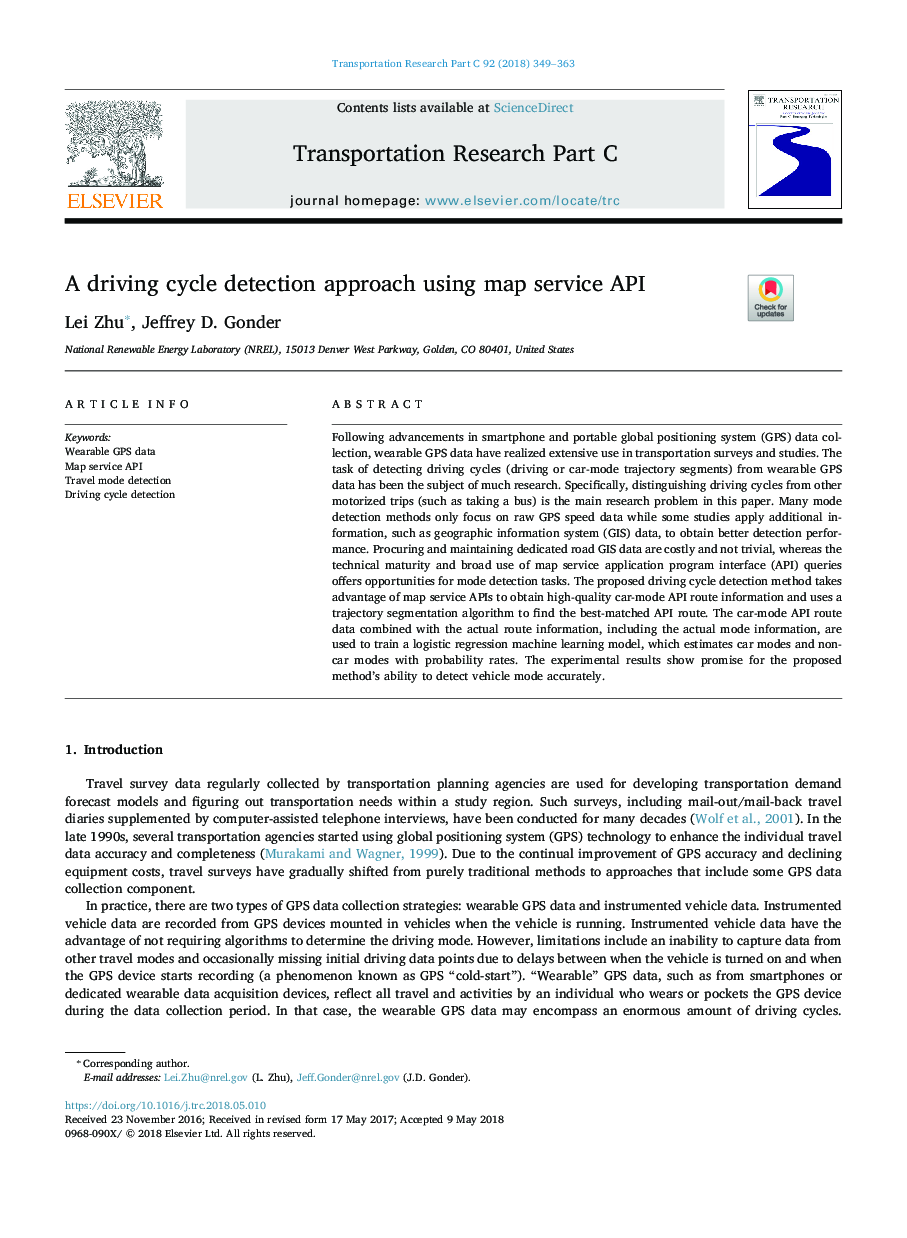| Article ID | Journal | Published Year | Pages | File Type |
|---|---|---|---|---|
| 6935852 | Transportation Research Part C: Emerging Technologies | 2018 | 15 Pages |
Abstract
Following advancements in smartphone and portable global positioning system (GPS) data collection, wearable GPS data have realized extensive use in transportation surveys and studies. The task of detecting driving cycles (driving or car-mode trajectory segments) from wearable GPS data has been the subject of much research. Specifically, distinguishing driving cycles from other motorized trips (such as taking a bus) is the main research problem in this paper. Many mode detection methods only focus on raw GPS speed data while some studies apply additional information, such as geographic information system (GIS) data, to obtain better detection performance. Procuring and maintaining dedicated road GIS data are costly and not trivial, whereas the technical maturity and broad use of map service application program interface (API) queries offers opportunities for mode detection tasks. The proposed driving cycle detection method takes advantage of map service APIs to obtain high-quality car-mode API route information and uses a trajectory segmentation algorithm to find the best-matched API route. The car-mode API route data combined with the actual route information, including the actual mode information, are used to train a logistic regression machine learning model, which estimates car modes and non-car modes with probability rates. The experimental results show promise for the proposed method's ability to detect vehicle mode accurately.
Related Topics
Physical Sciences and Engineering
Computer Science
Computer Science Applications
Authors
Lei Zhu, Jeffrey D. Gonder,
